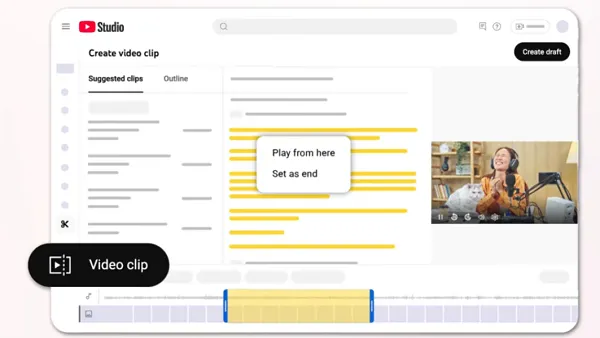Now the fuss is starting to die down around the Google Plus Pages launch, we've spent some time digging around to look at the detail of how easy or otherwise it is to administrate and manage a G+ brand page.
The first and most obvious problem is the single admin rights - much covered elsewhere, and something that I'm sure Google will fix quickly. This is the most obvious barrier to companies using it with any real effort.
Reporting inappropriate content to Google+ is relatively easy, with different options, depending on whether you are reporting a post, comment or providing feedback on a webpage.
Webpage reports are primarily feedback to Google about technical matters, using the 'send feedback' button that sits in the corner of each page. When you hit the button, you can highlight the part of the page that you want to report, and submit it to Google. You can also black out any bits you don't want to submit, such as personal information. This is a great feature, but as it may also be used to report abuse, I'd like to see something built onto this to categorise reports, so that pages containing serious abuse, for example, don't get lost among more minor complaints or technical issues.
A general comment about reporting inappropriate content - the buttons are somewhat subliminal and you can only flag a comment when you hover over it. CEOP do not yet seem to have a page in Google+, nor of course the app aimed at young people which installs a panic button on Facebook home pages.
You can report profiles - with a choice of spam, nudity, hate speech or violence, copyright, impersonation or fake profile (what happened to pornography or child abuse?). There will be no notification to the reporter of any action taken: "We've received your report and will review it as soon as we can. Please note that we will not personally notify you of our decision. If you see the profile is still available within a few days, it's likely that we've determined it is not in violation of our policies." Whilst in many cases, the lack of follow up may not be an issue, it is certainly proving so with reported bullying on Facebook.
You can report posts with the arrow at the top right corner. Here you have a choice of spam, nudity, hate speech or violence, child abuse, copyright or other (not pornography)) Again, no notifications
You can also flag comments (with no categorisation) and there exists an 'unflag' option for accidental button-pushing.
It's still early days, and I suspect a disproportionately high proportion of people on G+ are involved in brand marketing and social media, so reported or blocked content is likely to be low initially (although I did find some profiles of blatantly pornographers). When consumers use Google Plus in large numbers, these features will become more important to block abuse, spam and other unwelcome or illegal behaviour. There is a clear content policy on Google+ (though you have to search to find it). It includes the usual list of illegal activity, abuse, hate speech and so on (unbelievably though these policies make reference to blocking 'child pornography' rather than 'child abuse images' which child protection agencies will, I'm sure, lobby to change).
How well this reported content is managed and how quickly it will be taken down remains to be seen. Let's hope it does better than Facebook, which doesn't have a great reputation for pulling down offensive or abusive content.
The big drawback in moderation terms is that, as with Facebook, you can't pre-moderate comments. A search for 'moderation' or 'moderate' in Google Plus Help brings up no responses, and there isn't yet a profanity filter option (which Facebook does have). However, Google announced yesterday that a handful of social media management platforms (Context Optional, Vitrue and Buddy Media among them) have been given access to the Google Plus API, so management tools are likely to be one their way shortly. As more consumer brands set up G+ Pages, they'll want to make sure their pages stay clean, and abuse or spam free.
On a brand's own posts, you have the option to edit, delete, link to or lock the post (an improvement on Facebook which only allows you to delete or hide a post); and to disable comments at a granular level, post by post. Facebook will only allow you to disable comments for the whole page, at the 'Edit Page' level. You can't spam people with sales messages - individuals have to have put your Page in their circles for you to send content to them. You can also block or ignore users.
G+ doesn't seem to be as social as Facebook. There doesn't appear to be the option to post directly onto a brand's Page (as you can post onto a Facebook Wall), but you can comment on individual posts. This means that the brand has to initiate the conversion - something that brands might prefer, but that I suspect consumers won't, and does put a spoke in the wheel of using Google+ pages for customer service. I imagine this will change in the future.
Age restrictions
Currently, the minimum age for Google+ is set at 18, although the Google+ FAQ page doesn't set out the minimum age requirement (but if you try to get an account and fill out your age as under 18 you will (we think) be refused). Before Google+ pages were opened to the public, Brian Rose, a Google customer support rep, said: "We won't be letting users under 18-years-old into the Field Trial until we're confident that we have the right teen safety features in place. We currently don't have plans to open the product to users under 13, thanks." Another rep said: "We want to make sure that Google+ provides the best experience to users under 18 who may be eligible to use our product before we open it up to them."
Setting up a page is (relatively) easy - but be careful who you choose to set it up as they will be sole admins for the moment, and I like the idea of being able to segment customers by interest or customer group. You can only add people to your circles that have first added your company page to one of their own circles. The circles functionality will let brands create communities within communities - for example brand ambassadors, stakeholders and customers. This is much easier to do than on Facebook, which involves the intricate creation of lists.
It is still in a very early stage, but Google Plus needs to learn from Facebook's early mistakes and make Pages safe from abusive content. As Google+'s audience grows, it need to build in at least the same safety advice and help as Facebook has and could easily steal a march on Facebook by building in admin tools to make posts and comments easier to moderate and manage. Sharing and linking to information is easy, but real interaction between a brand and its consumers will be stilted in the short term until some of these issues are addressed.












